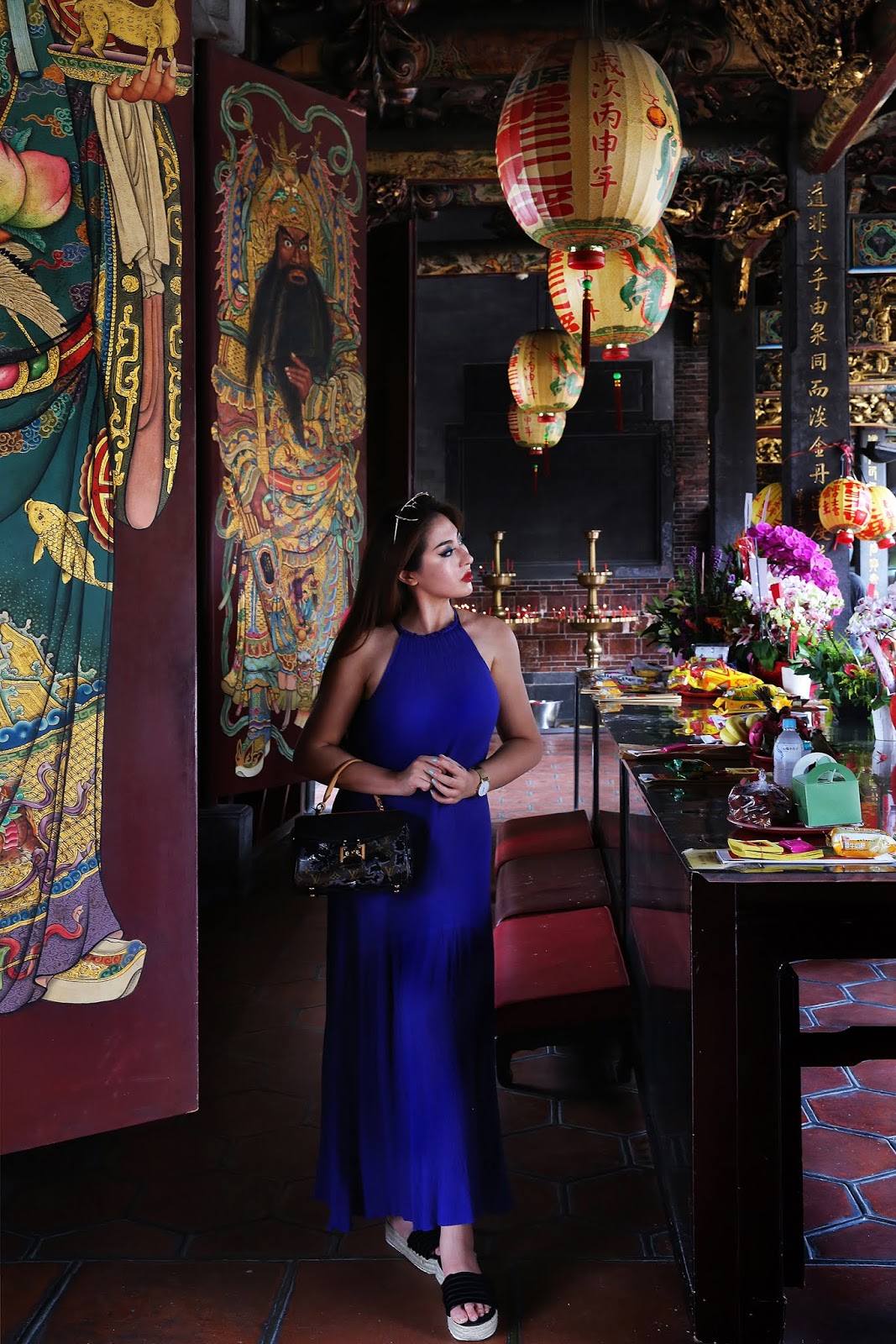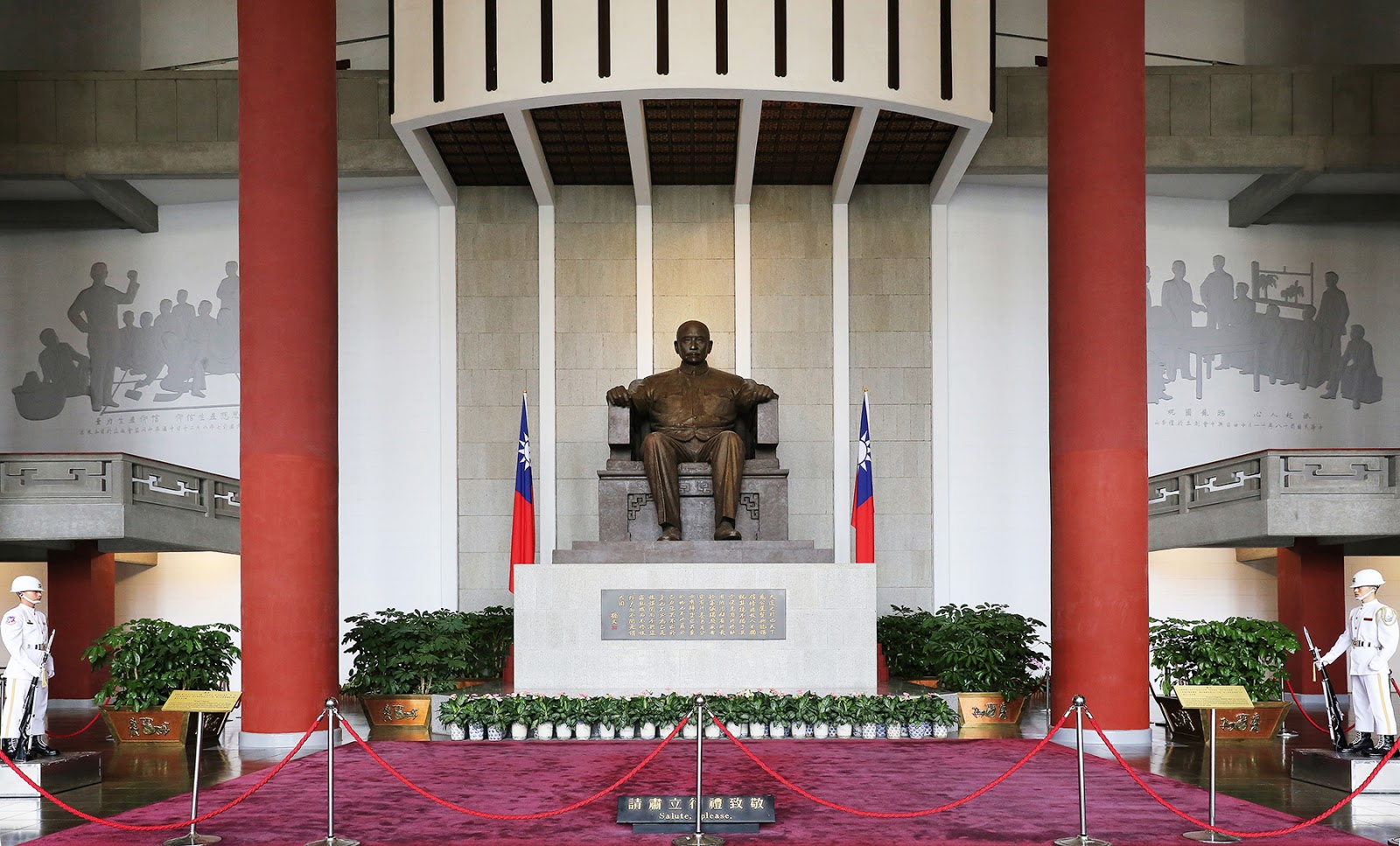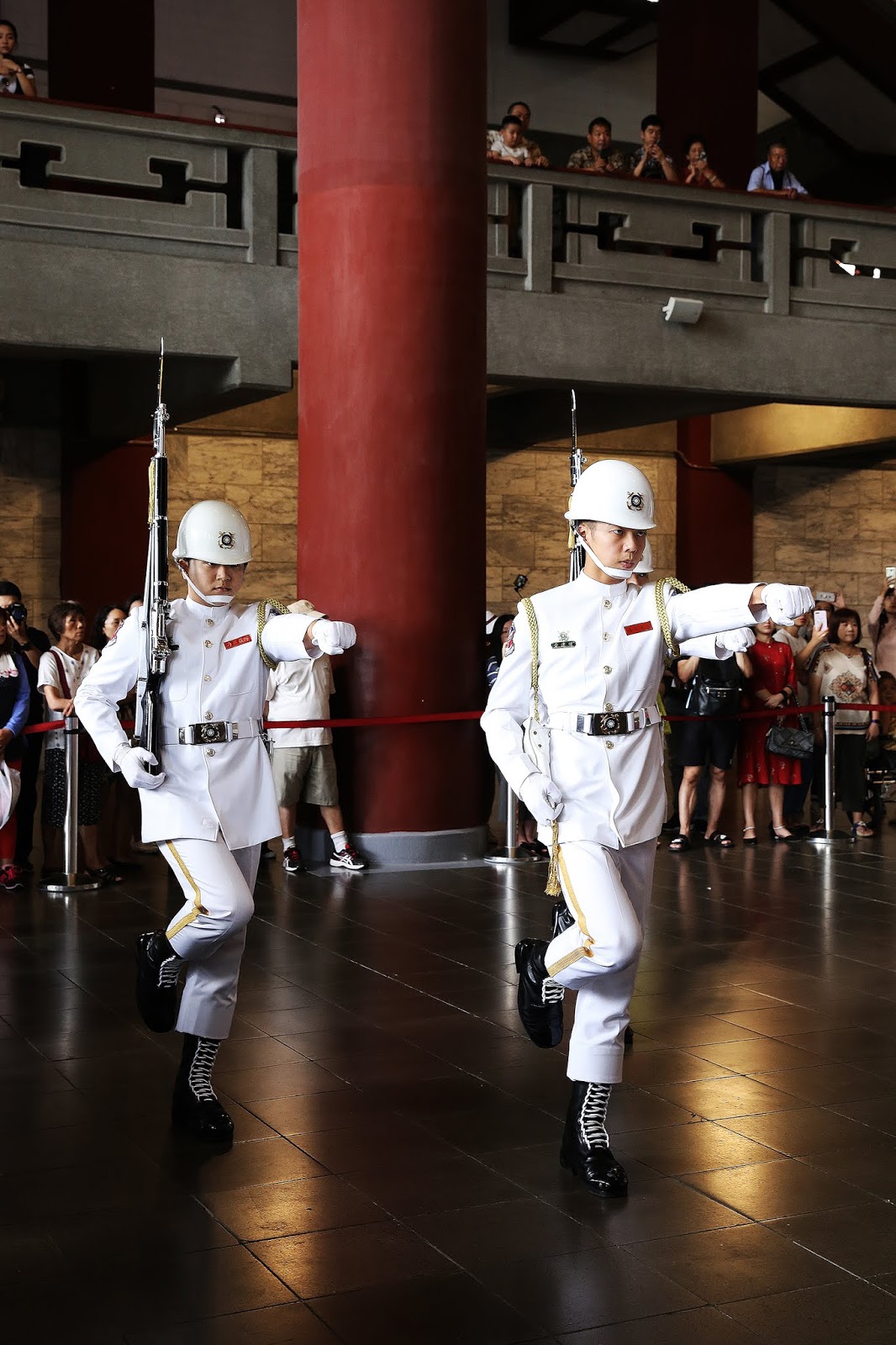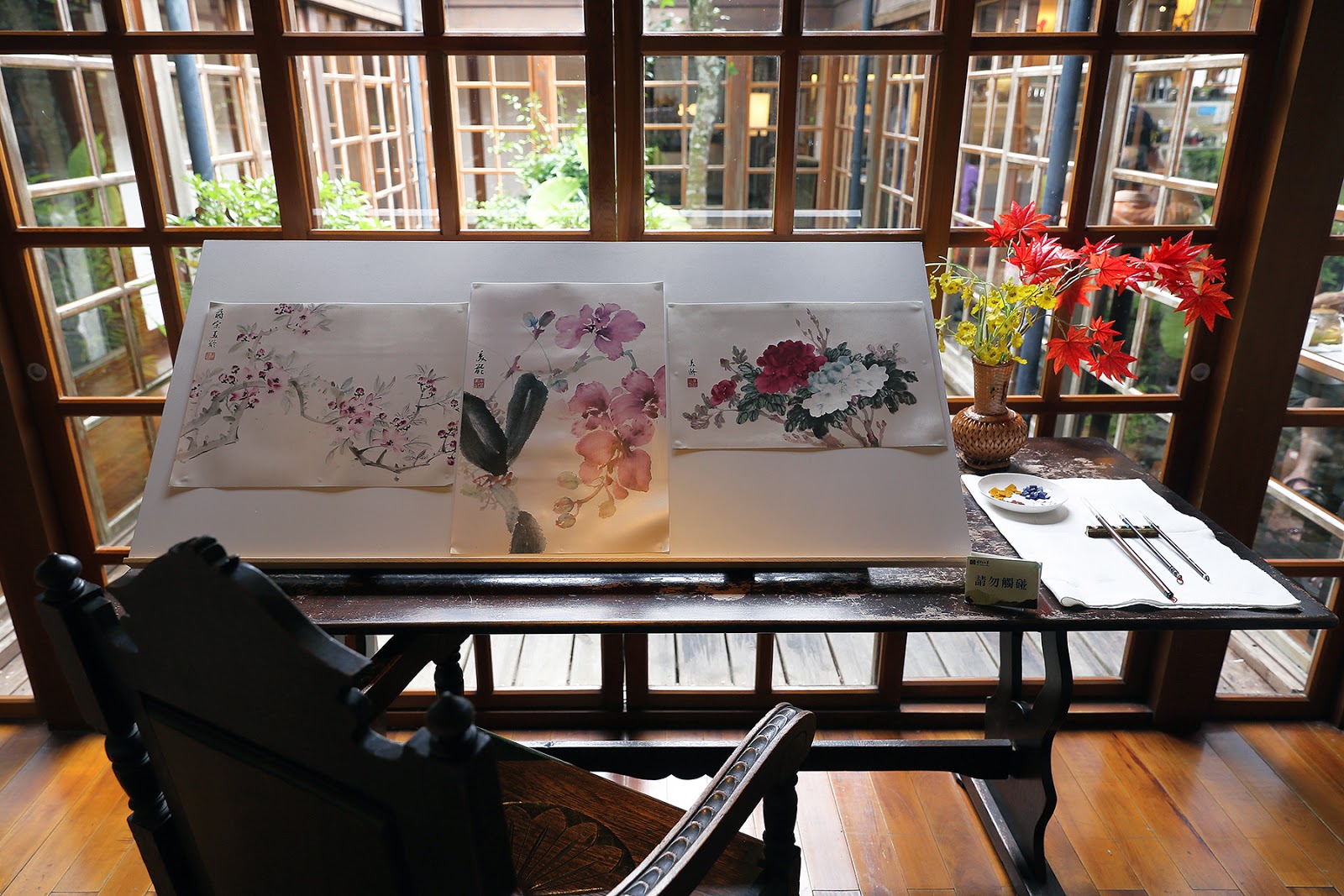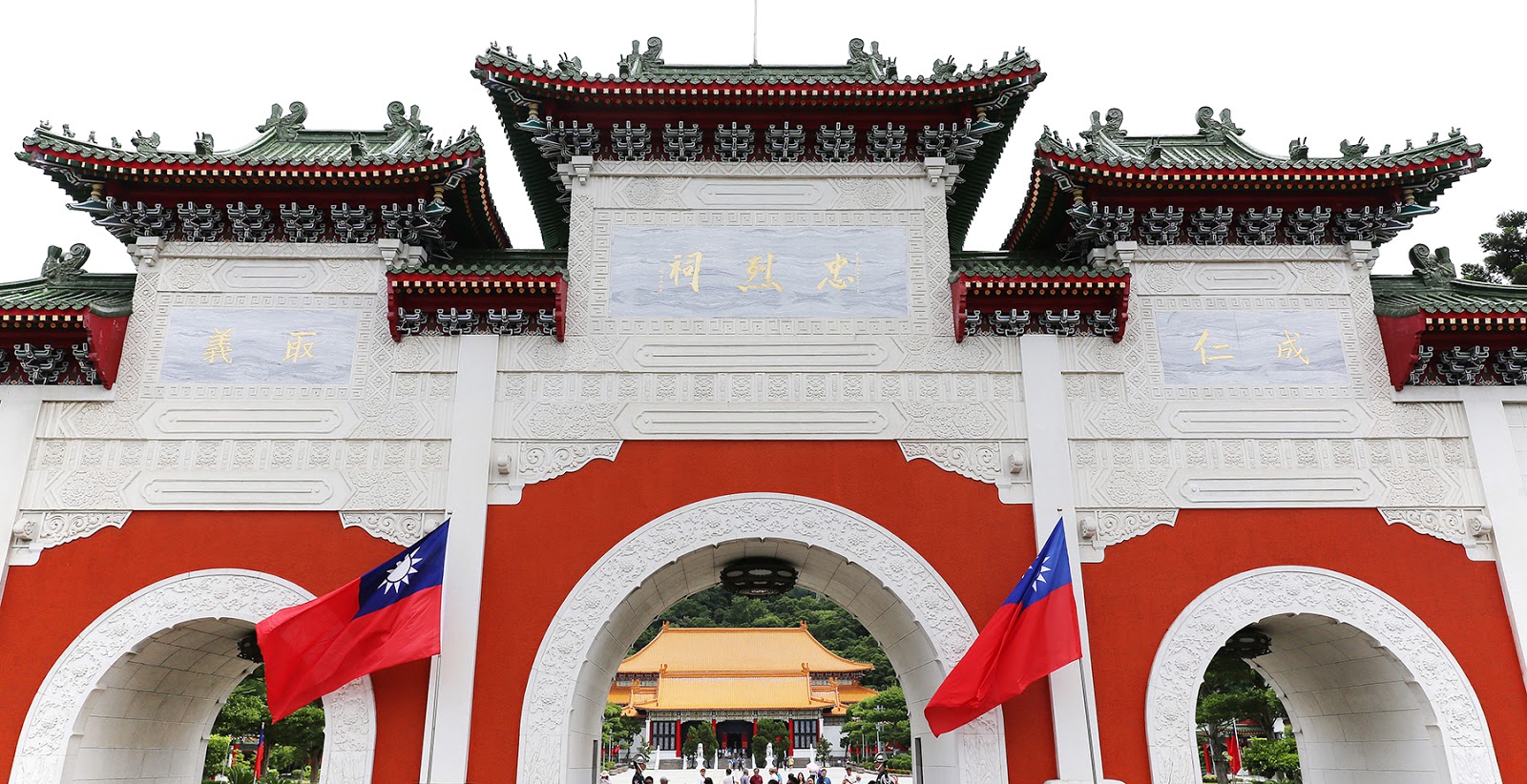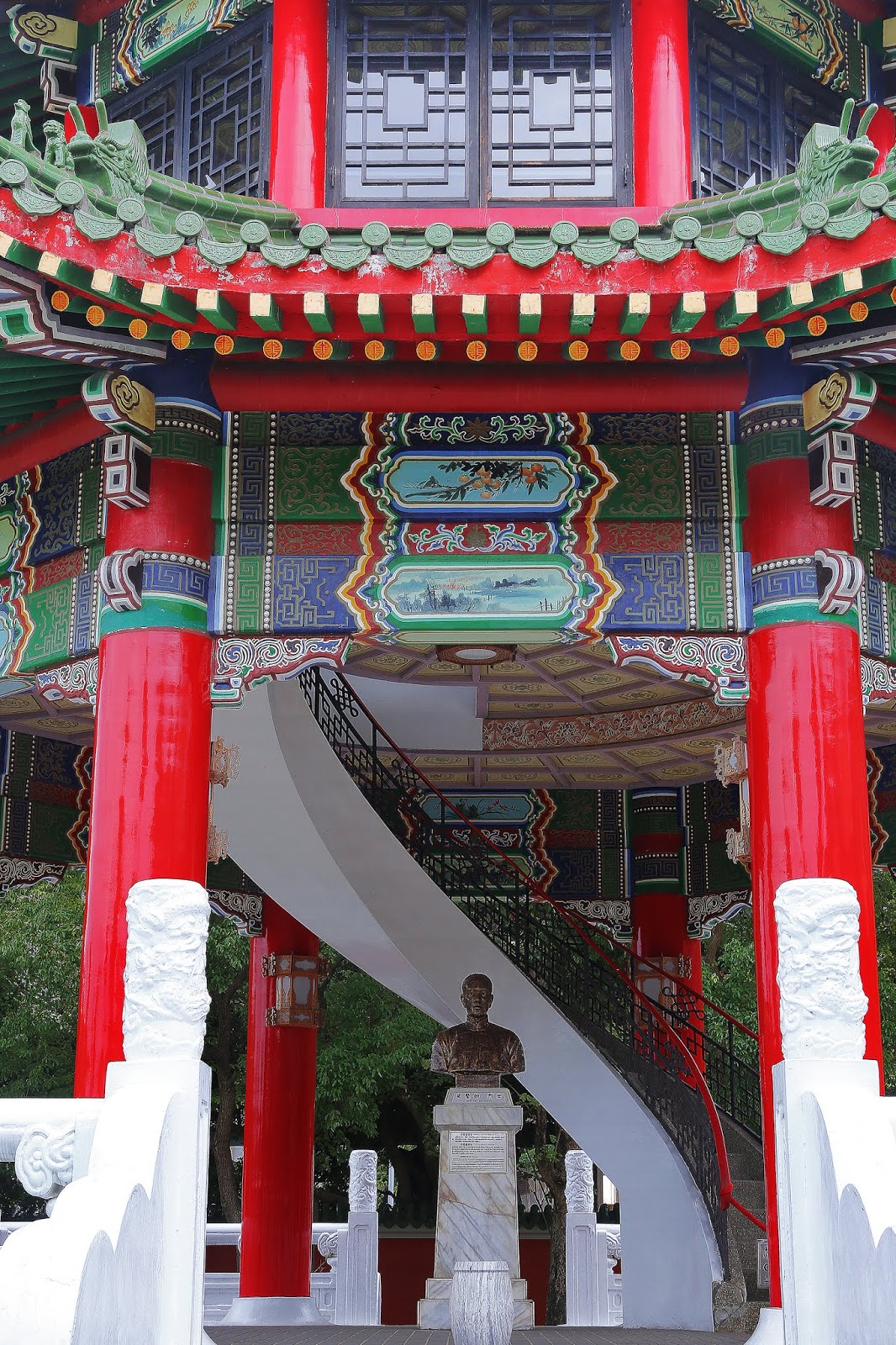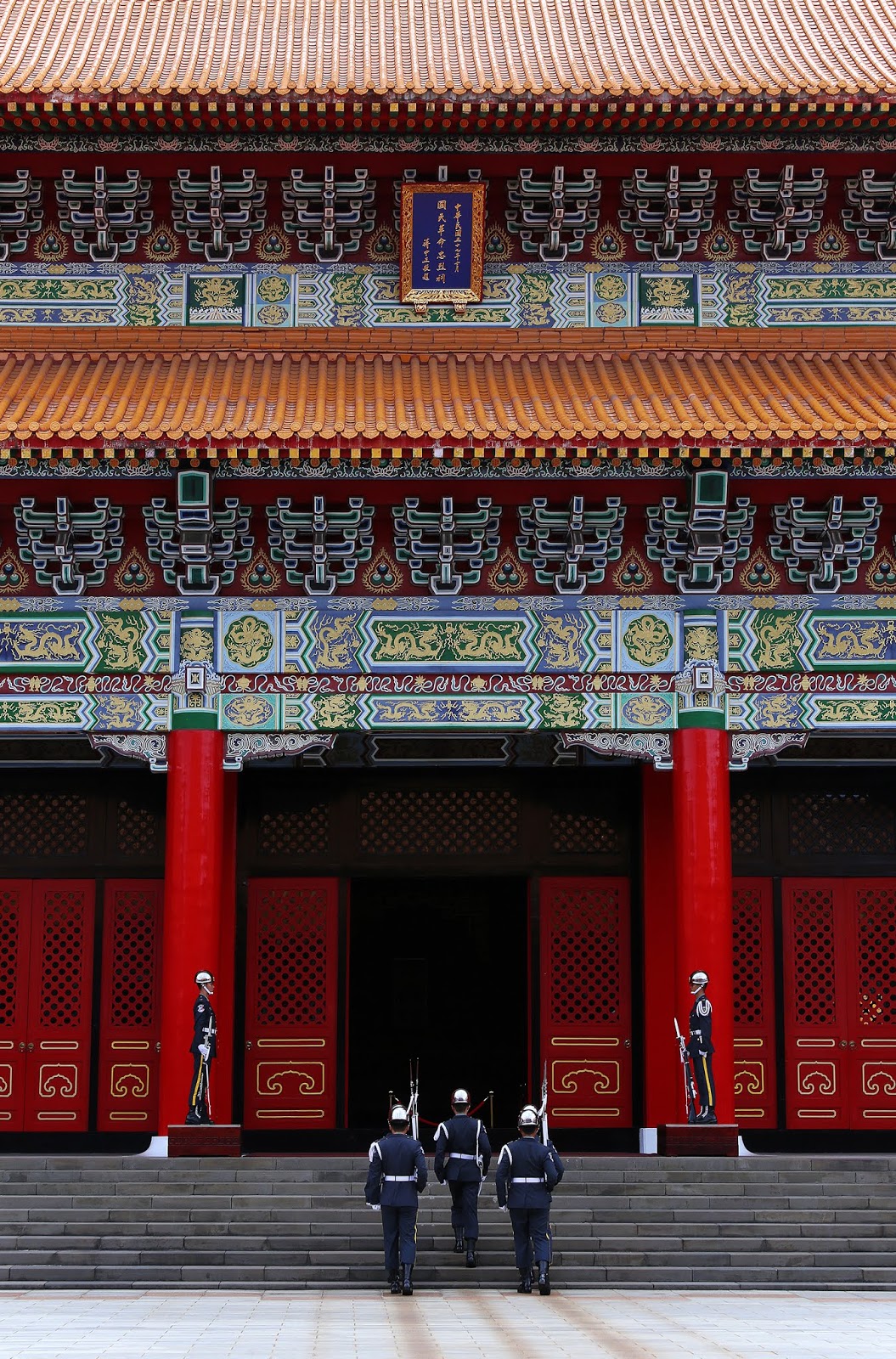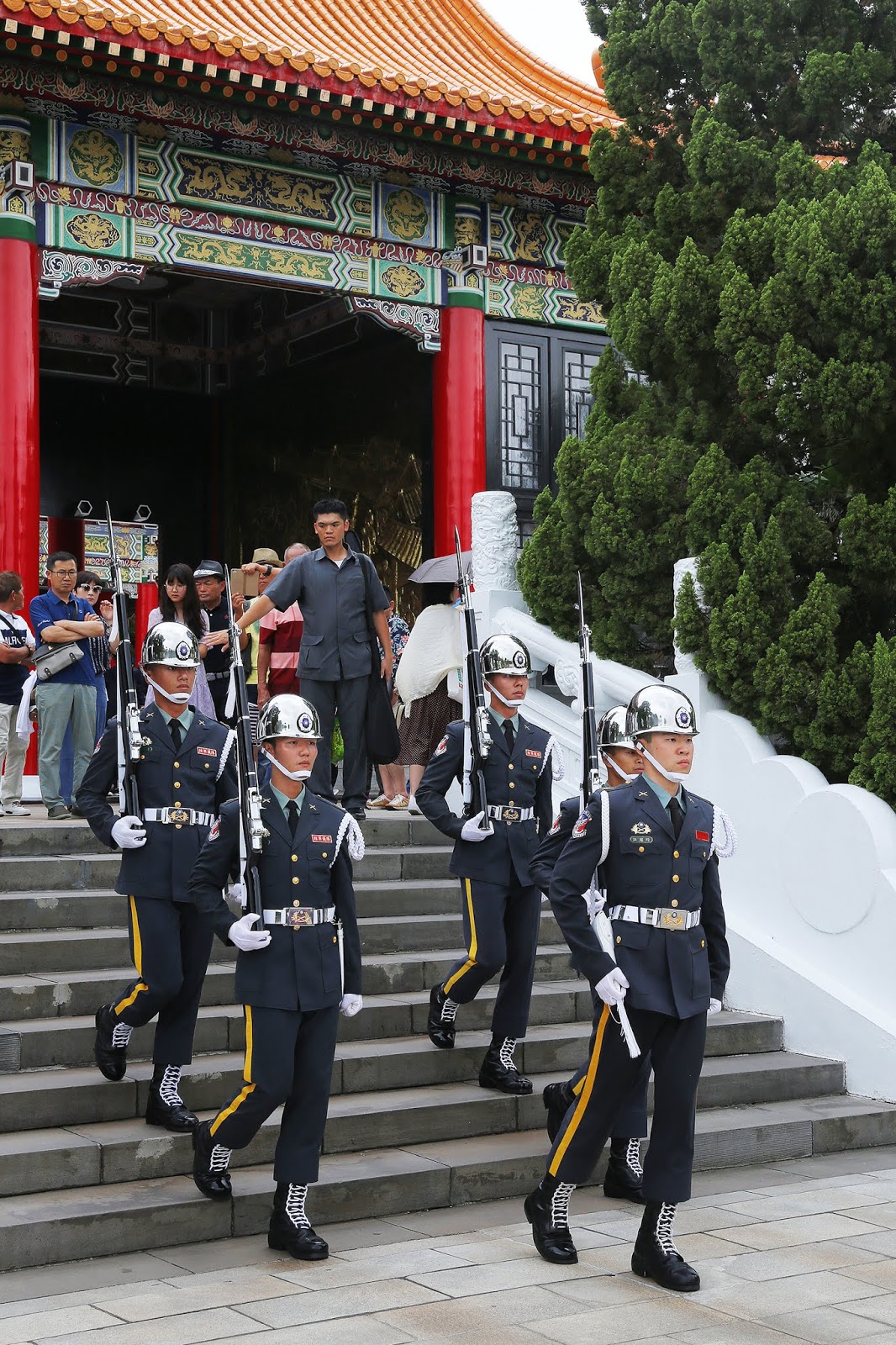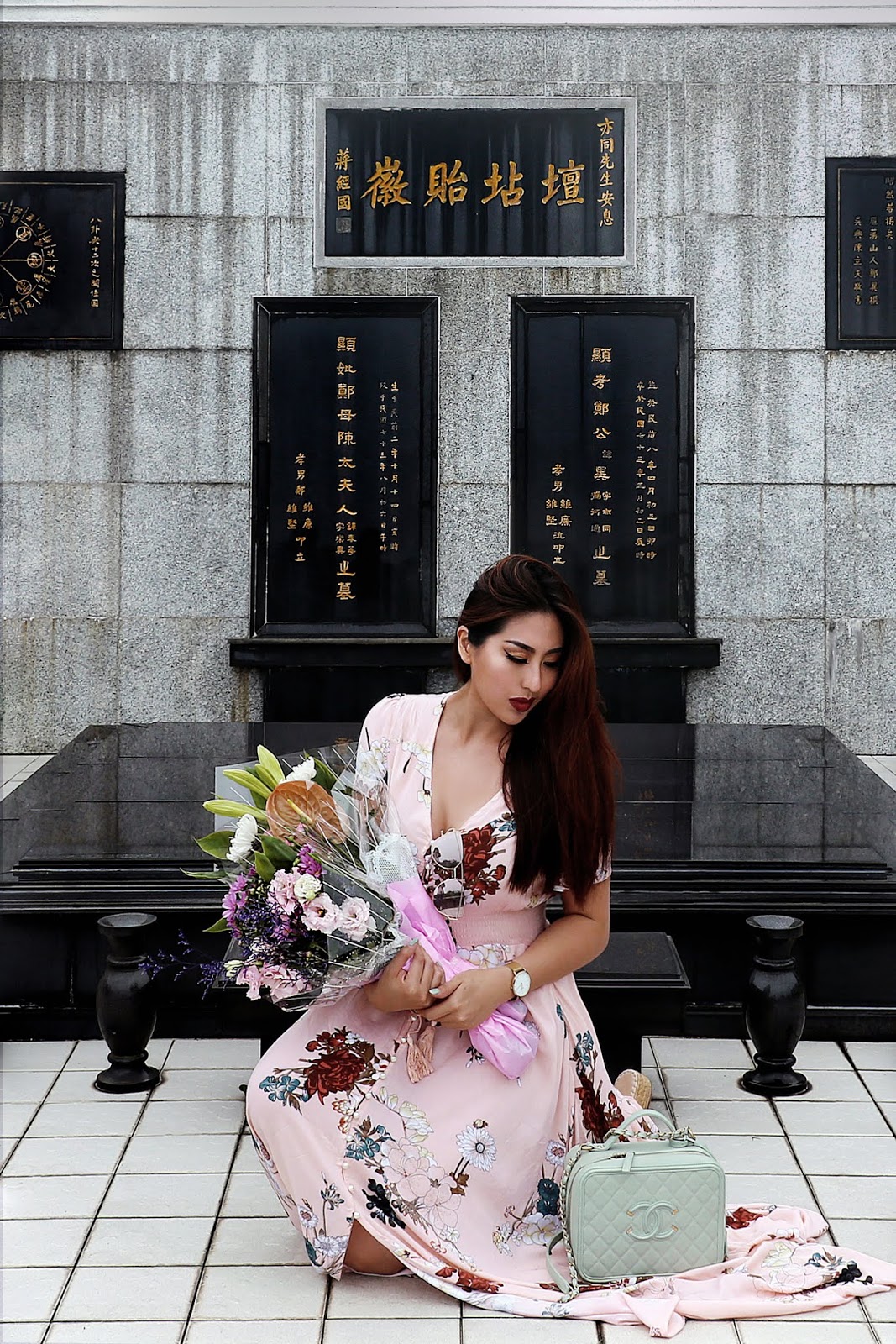BLUE-BLOODED: MY FAMILY HISTORY & CONNECTION TO THE FOUNDERS OF TAIWAN, THE REPUBLIC OF CHINA
The saying goes: History is written by the victors. If you ask The People’s Republic of China (PRC, commonly known as China) they'd tell you that the Republic of China (ROC, commonly known as Taiwan) is not its own country but rather a rogue state that, if the PRC has its way, would be unified with the Mainland despite the ROC’s audacity to break away from the glorious path of Communism. As for me, I have sympathy for the devil - I have much empathy for the struggles of Taiwan, the founders of which were on the losing side of history. This comes as no surprise given my family connection to the Kuomintang (often translated as the Nationalist Party of China), the Blue Party who have almost exclusively ruled modern-day Taiwan ever since the country's inception in 1945. My desire to delve deeper into Taiwan literally runs in my veins, and so, I recently travelled to Taipei to learn more about my illustrious ancestors, and explore the country born of their blood, sweat, and tears.
Today’s story, my take on one of the topics of this month’s #TRAVELLINKUP: PEOPLE THAT HAVE MADE AN IMPACT ON YOUR TRAVEL, is a brief introduction to Taiwan, the places to visit in Taipei to get a feel for the history of the country; and the remarkable story of a man whose passion, struggle, and sacrifice led me to visit the Republic of China.
SUN YAT SEN MEMORIAL HALL
A deep bow, and then I straightened up to take in the larger-than-life figure of Dr. Sun Yat Sen - National Father of the Republic of China, co-founder and first leader of the Kuomintang. Dubbed the "forerunner of democratic revolution", Dr. Sun was a uniting figure in post-Imperial China. Dr. Sun is especially unique among 20th-century Chinese politicians for being widely revered amongst the people from both sides of the Taiwan Strait, with memorials dedicated to the great man in both Taiwan and China. The “salute, please” sign between his statue and the red velvet rope is less of a suggestion but rather more a reminder of the respect befitting the good doctor. As is the hourly changing of the guard and the vast space dedicated to The National Sun Yat Sen Memorial Hall - the total building area covers 7 acres in an open space of over 28.4 acres. Just as appropriate to the legacy of Dr. Sun (a philosopher as well as revolutionary) is the space’s use as a multi-purpose social, educational and cultural centre for the public including a performance hall, a 10,000 square foot exhibition centre, lecture halls, and a library with over 300,000 books.
Go for the displays detailing Sun's life and the revolution he led, meander around the labyrinth of educational spaces and exhibitions, stay for the hourly changing of the guard, and afterward; take a pleasant stroll along Lake Cui in surrounding Chung Shan Park.
CHIANG KAI SHEK MEMORIAL HALL
The serene smile that beams from above from a seemingly benevolent father figure belies the Generalissimo with a controversial legacy. Chiang Kai Shek was the first president of the Republic of China (first in Mainland China from 1928 to 1949, then in exile in Taiwan up till 1975), an influential member of the Kuomintang, and a close ally of Sun Yat Sen. To his supporters, Chiang played a major part in the Allied victory of World War II and is the national figure of the Chinese resistance against Japan as well as a champion against Communism. His critics are far less generous, dubbing him a dictator. Whatever your opinion on the first president of Taiwan, Chiang Kai Shek Memorial Hall is worth the visit. I climbed the white stairs - with 89 steps to represent Chiang's age at the time of his death - and paused at the main entrance to take in the view of the city beneath me before entering the hall to pay my respects to his statue. From the outside, Chiang Kai Shek Memorial Hall is equally striking - the white walls of the hall pops against the blue roof (below), octagonal in shape to represents the number eight, a number traditionally associated in the region with abundance and prosperity.
GRASS MOUNTAIN CHATEAU
Tucked away in the misty mountains of Yangmingshan National Park is Grass Mountain Chateau. This quaint, unassuming little retreat was in fact the first Presidential Residence in Taiwan, being the former residence of President Chiang Kai Shek. The chateau barely survived alleged arson in 2007 to reopen 4 years later. Today, it’s a tiny museum filled with personal effects, offering a glimpse into President Chiang's life. My favourite was Madame Chiang’s cozy art studio facing a tiny courtyard drenched with sunlight from an open skylight. But for me, the best thing about Grass Mountain Chateau was their cafe’s marvellous cheesecake and rose-infused latte, complete with petals.
NATIONAL PALACE MUSEUM
Given my love of art and history, a visit to the National Palace Museum (which I’ll cover in full in an upcoming story) was a must. The museum hosts the largest collection of Chinese art in the world - 700,000 pieces encompassing 8,000 years of history of Chinese art from the Neolithic age to the modern, including objects belonging to China's emperors. It’s a feat made all the more incredible knowing that all the pieces were moved from the People’s Republic of China to Taiwan by the Kuomintang following their defeat in the Chinese Civil War. It is unfathomable that, had the contents of the National Palace Museum not been evacuated to Taiwan for safekeeping, all of these priceless antiques and artefacts would have been destroyed by the Communists in their purge on Chinese history and culture, the infamous Cultural Revolution.
Which leads me to a point that is...
...CONTROVERSIAL, BUT FACT:
Many are astonished by the stereotype of badly-behaved Chinese tourists who indiscriminately spit, shove, and desecrate monuments. Those stereotypes - derisively referred to as “Mainlanders” or “PRCs” by Overseas Chinese - are the result of how Mao Ze Dong’s Cultural Revolution erased all of China’s culture, morals, ethics, and values. Their provincial “survival of the fittest” mentality from an era of famine and poverty under Communism haven’t caught up with their sudden wealth created by the economic reform and rapid urbanisation under Deng Xiao Peng. The Mainlanders may have gone from rags to riches in a single generation, but unfortunately not all of them have received an education on how to conduct themselves in a society relatively unmarred by deprivation. So, as infuriating as that Chinese tourist who pushes past you to jump to the front of the queue is, spare a thought for them - they’re not necessarily a bad person - they’re just a product of their environment and victim of their circumstance.
NATIONAL REVOLUTIONARY MARTYRS’ SHRINE To even begin to comprehend the lives lost in the eternal battle for freedom, I had to only look at the the National Revolutionary Martyrs' Shrine. Dedicated to the war dead of the Republic of China, National Revolutionary Martyrs' Shrine houses the spirit tablets of about 390,000 persons killed during the Xinhai Revolution, Northern Expedition, Second Sino-Japanese War, Chinese Civil War, and the First and Second Taiwan Strait Crises. That the architecture of the National Revolutionary Martyrs' Shrine is reminiscent of the Hall of Supreme Harmony in Beijing's Forbidden City is surely no accident. Were you, like the Kuomintang, fleeing for fear of your inevitable execution once your forces had fallen to the spectre of Communism and forced to set up government-in-exile, surely you’d construct a shrine that recalls one of the greatest architectural feats of your home country. Whether out of homesickness or the unknown fate of whether the historical building that inspired this shrine's design would be destroyed in the Cultural Revolution, the urge to create a reminder of home-away-from-home transcends political opinions. It is a matter of the heart and of the soul. |
Last but not least, this is the story of the man who inspired me to visit Taiwan. Through him, I share a bond with Taiwan, the Republic of China. My maternal great-grandfather.
My great-grandfather (below) was born in 1904, in Zhejiang, China. Educated at Edinburgh University, in his time he was a Central Committee Executive and special agent for the Kuomintang, and held the roles of Chinese Ambassador to Australia and Chinese Ambassador to Iran. He lived in Iran and China, but was force to leave the country when it fell to Communism and became the People’s Republic of China. Subsequently, his party fled to, set up, and single-handedly ruled (up till 1987) the country that is now called Taiwan, or the Republic of China.
My great-grandfather relocated to Hong Kong and finally Singapore where he subsequently became a professor at Nanyang University. Singapore’s second president awarded him the “Public Service Medal” for his commitment and contribution to the education sector in Singapore. Until the end of his life, my great-grandfather’s one desire was to return, once more, to the country where he was born. That dream never came true. My great grandfather died in exile in Taiwan, in 1984, at the age of 80. The second president of Taiwan, President Yen, attended his funeral. My great grandfather is buried beside his wife among his peers in Chin Pao San cemetery. Above his tomb is an inscription from President Yen in honour and recognition of all his achievements and contributions.
Apparently, I got my love for prose and art from him - or rather, it skipped 2 generations and manifested in me, the great-granddaughter he never met. I was born 2 years after he passed away, in Malaysia, across the South China Sea from his final resting place. I never got to meet my great-grandfather in this life. But 2 weeks ago, at the ripe old age of 31, I finally visited him in Taiwan, on the soil of the nation born from his and his party’s struggle.
Da Gung, if you’re reading this, I hope you’re proud of me for flying the literary flag in the family. Oh, and I promise to improve my Mandarin speaking and comprehension skills. ❖

